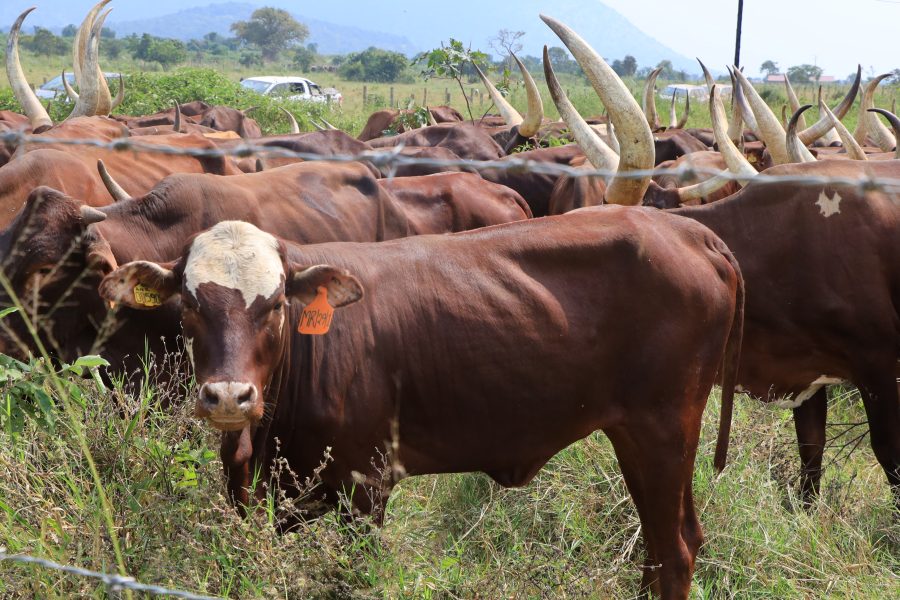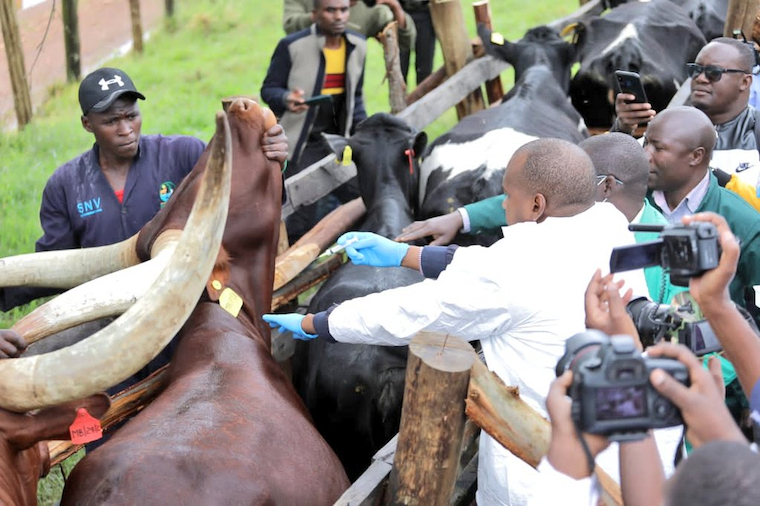Entebbe, Uganda — Scientists at the National Agricultural Research Organisation (NARO) in Uganda have spearheaded a breakthrough anti-tick vaccine that will save the East African nation, billions of money.
The scientists are Fred Kabi, Paul Kasaija, Swidiq Mugerwa, Justus Rutaisire, José de la Fuente, and Christian Gortázar.
In a press statement released to the media last evening, the NARO Senior Communications Manager, Frank Mugabi, reveals that annually, the total global costs linked to ticks and vectored pathogens in cattle range between US$ 13.9 billion and US$ 18.7 billion.
In Uganda, studies have estimated that losses of over USD 1.1 billion (approximately 4.2 trillion shillings) occur annually due to ticks and tick-borne diseases including East Coast Fever (ECF) of (amashuyo amakebe), babesiosis (redwater), anaplasmosis (kashanku) and cowdriosis (kamunguluze). At farm level, 80% of the total annual expenses incurred in management of all cattle diseases are associated with controlling tick-borne diseases,” he writes.
He adds that for instance, a primary ECF outbreak is usually fatal and results in a 30% and up to 100% mortality of the calf crop among indigenous and naive crossbred exotic cattle respectively on an annual basis.
“Generally, ticks are considered to be the most resilient and harmful parasites to the livestock globally,” he adds in the statement.

Ticks have long plagued cattle, wreaking havoc on their health and productivity, and causing substantial economic losses, particularly in sub-Saharan Africa. However, the research by scientists at NARO promises to revolutionize tick control and alleviate the burden on the dairy and beef industries.
Traditionally, tick control relied heavily on chemical acaricides, but their use has led to the emergence of acaricide-resistant tick populations and environmental degradation.
“In response, researchers have been exploring more sustainable alternatives, leading to the development of anti-tick vaccines,” Mr. Mugabi told our reporters last evening.
The anti-tick vaccines at NARO will now offer a promising solution, providing a sustainable and environmentally friendly method for tick control. Unlike acaricides, the vaccines will induce a protective response in vaccinated animals, reducing tick populations over time, offering long-term benefits, and will be more cost-effective in the long run.
The collaboration between NARO and the Health and Biotechnology Institute for Game and Wildlife Research (IREC) in Spain, led by Prof. José de la Fuente, has been instrumental in this breakthrough. Over the past decade, researchers have developed vaccines targeting tick species prevalent in Uganda, including the brown ear tick, African blue tick, and tropical bont tick.
According to Mr. Mugabi, the vaccines, derived from a protein called Subolesin, have already shown promising results in field trials conducted across Uganda.
“Injectable and oral vaccine formulations have been evaluated on farms representing different ecological zones, with no deaths reported due to tick infestations during the trial period,” he writes.
He adds that NARO has already obtained a utility model patent for the vaccines and is working towards regulatory approval for their widespread use. Once approved, these vaccines can potentially transform tick control practices in Uganda and beyond, offering a sustainable solution to a persistent problem.
The success of this collaborative effort underscores the importance of international partnerships in addressing complex socioeconomic challenges and translating scientific research into practical solutions. By working together, researchers and policymakers can pave the way for a more sustainable and equitable future.
Acknowledgment: Government of Uganda; National Agricultural Research Organisation; Ministry of Agriculture, Animal Industry and Fisheries; Spanish National Research Council (CSIC), University of Castilla-La Mancha (UCLM), and Farmers.
About the scientists: The scientists are from the National Agricultural Research Organization (NARO) Uganda, the Health and Biotechnology (SaBio), the Institute for Game and Wildlife Research (IREC), the Spanish National Research Council (CSIC), the University of Castilla-La Mancha (UCLM), and the Regional Government of Castile-La Mancha (JCCM) of Spain.


















